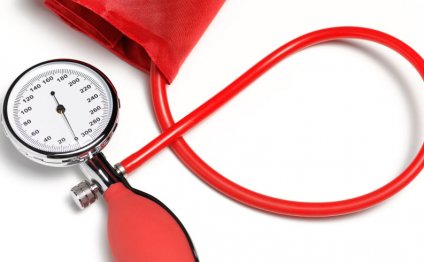
How to take accurate blood pressure?
 Working for a company that develops blood pressure monitoring devices and technologies, I deal with blood pressure on some level every day. We make accurate and reliable blood pressure measurement our business...literally. So, it only makes sense that we should care about accurate blood pressure measurement from a fundamental perspective, which is the inspiration for my first blog post.
Working for a company that develops blood pressure monitoring devices and technologies, I deal with blood pressure on some level every day. We make accurate and reliable blood pressure measurement our business...literally. So, it only makes sense that we should care about accurate blood pressure measurement from a fundamental perspective, which is the inspiration for my first blog post.
As most readers probably know, the typical method for blood pressure measurement has long been the manual auscultatory technique with a mercury column or mechanical aneroid sphygmomanometer. However, with the benefits that automated BP devices provide with a repeatable standardized technique and removal of observer bias, there has been a shift towards automated devices in clinical practice. As the American Heart Association (AHA) states in their most recent recommendations for blood pressure measurement, "there is a role for (automated) devices in office use, both as a substitute for traditional (manual) readings and as supplements to them." * However, the AHA goes on to recommend that a properly maintained monitor for manual measurement of blood pressure be available for routine office measurement.
Another observation the AHA makes is that although the auscultatory method has been the standard for blood pressure measurement for over 50 years, surveys indicate that physicians rarely follow the well published guidelines for their use. * This is where we feel it is important to remind all healthcare professionals of best practices related to manual blood pressure measurement, so without further ado...
Step 1 - Choose the right equipment:
What you will need:
1. A quality stethoscope
2. An appropriately sized blood pressure cuff
3. A blood pressure measurement instrument such as an aneroid or mercury column sphygmomanometer or an automated device with a manual inflate mode.
Step 2 - Prepare the patient: Make sure the patient is relaxed by allowing 5 minutes to relax before the first reading. The patient should sit upright with their upper arm positioned so it is level with their heart and feet flat on the floor. Remove excess clothing that might interfere with the BP cuff or constrict blood flow in the arm. Be sure you and the patient refrain from talking during the reading.
Step 3 - Choose the proper BP cuff size: Most measurement errors occur by not taking the time to choose the proper cuff size. Wrap the cuff around the patient's arm and use the INDEX line to determine if the patient's arm circumference falls within the RANGE area. Otherwise, choose the appropriate smaller or larger cuff.
Step 4 - Place the BP cuff on the patient's arm: Palpate/locate the brachial artery and position the BP cuff so that the ARTERY marker points to the brachial artery. Wrap the BP cuff snugly around the arm.
Step 5 - Position the stethoscope: On the same arm that you placed the BP cuff, palpate the arm at the antecubical fossa (crease of the arm) to locate the strongest pulse sounds and place the bell of the stethoscope over the brachial artery at this location.
Step 6 - Inflate the BP cuff: Begin pumping the cuff bulb as you listen to the pulse sounds. When the BP cuff has inflated enough to stop blood flow you should hear no sounds through the stethoscope. The gauge should read 30 to 40 mmHg above the person's normal BP reading. If this value is unknown you can inflate the cuff to 160 - 180 mmHg. (If pulse sounds are heard right away, inflate to a higher pressure.)
Step 7 - Slowly Deflate the BP cuff: Begin deflation. The AHA recommends that the pressure should fall at 2 - 3 mmHg per second, anything faster may likely result in an inaccurate measurement. *
Step 8 - Listen for the Systolic Reading: The first occurence of rhythmic sounds heard as blood begins to flow through the artery is the patient's systolic pressure. This may resemble a tapping noise at first.
Step 9 - Listen for the Diastolic Reading: Continue to listen as the BP cuff pressure drops and the sounds fade. Note the gauge reading when the rhythmic sounds stop. This will be the diastolic reading.
Step 10 - Double Check for Accuracy: The AHA recommends taking a reading with both arms and averaging the readings. To check the pressure again for accuracy wait about five minutes between readings. Typically, blood pressure is higher in the mornings and lower in the evenings. If the blood pressure reading is a concern or masked or white coat hypertension is suspected, a 24 hour blood pressure study may be required to assess the patient's overall blood pressure profile.
Take this with you!Download a free e-book 10 Steps to Accurate Manual BP Measurement.
RELATED VIDEO



Share this Post
Related posts
Most accurate Blood pressure Monitors
Your blood pressure is creeping up a bit, so you’re finally taking your doctor’s advice and shopping for a home blood-pressure…
Read MoreMost accurate Blood pressure Monitors Consumer Reports
Trackers provide insight about habits and health, but using one might also help you shed a few pounds. Neil Busis, M.D…
Read More











